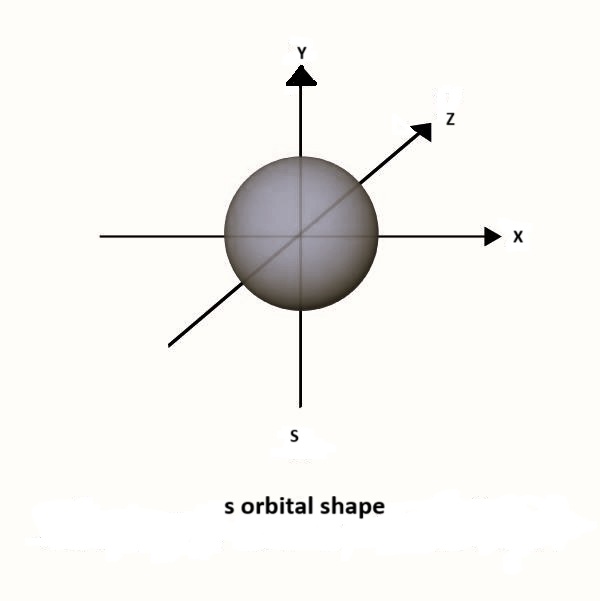In an atom, electrons are found in specific regions surrounding the nucleus, known as orbitals. These orbitals have specific shapes and sizes that represent the probability distribution of finding an electron in that region. Different types of orbitals are designated as s, p, d, and f, each with distinct shapes.
The s-orbital is spherical in shape and symmetric about the nucleus. It is non-directional, meaning the likelihood of locating an electron is equal in every direction around the nucleus. The size of the s-orbital increases with increasing principal quantum number (n).

The p-orbitals are dumbbell-shaped and oriented along three mutually perpendicular axes: px, py, and pz. Each p-orbital has two lobes with a node (a region of zero electron probability) at the nucleus.
The shapes of d-orbitals are more intricate compared to s and p orbitals. There are five d-orbitals (dxy, dyz, dzx, \(d_{x^{2}-y^{2}}\), and \(d_{z^{2}}\)). Four of them have cloverleaf shapes lying in different planes, while the \(d_{z^{2}}\) orbital has a unique shape with a doughnut-shaped ring around the middle lobe.
| Aspect | Orbit | Orbital |
|---|---|---|
| Definition | Fixed circular path followed by an electron around the nucleus (Bohr model). | Region in space where there is a high probability of finding an electron (Quantum mechanical model). |
| Nature | Well-defined path, similar to a planet orbiting the sun. | Probability distribution, no fixed path. |
| Model | Bohr’s atomic model. | Atomic model based on quantum mechanics. |
| Shape | Circular or elliptical paths. | Varied shapes (spherical, dumbbell, cloverleaf, etc.). |
| Electron Position | Electron is assumed to be at a precise location on the orbit. | Electron position is uncertain; described by a probability cloud. |
Understanding these concepts is fundamental to mastering atomic structure and electronic configurations, which are important topics in JEE Main chemistry.